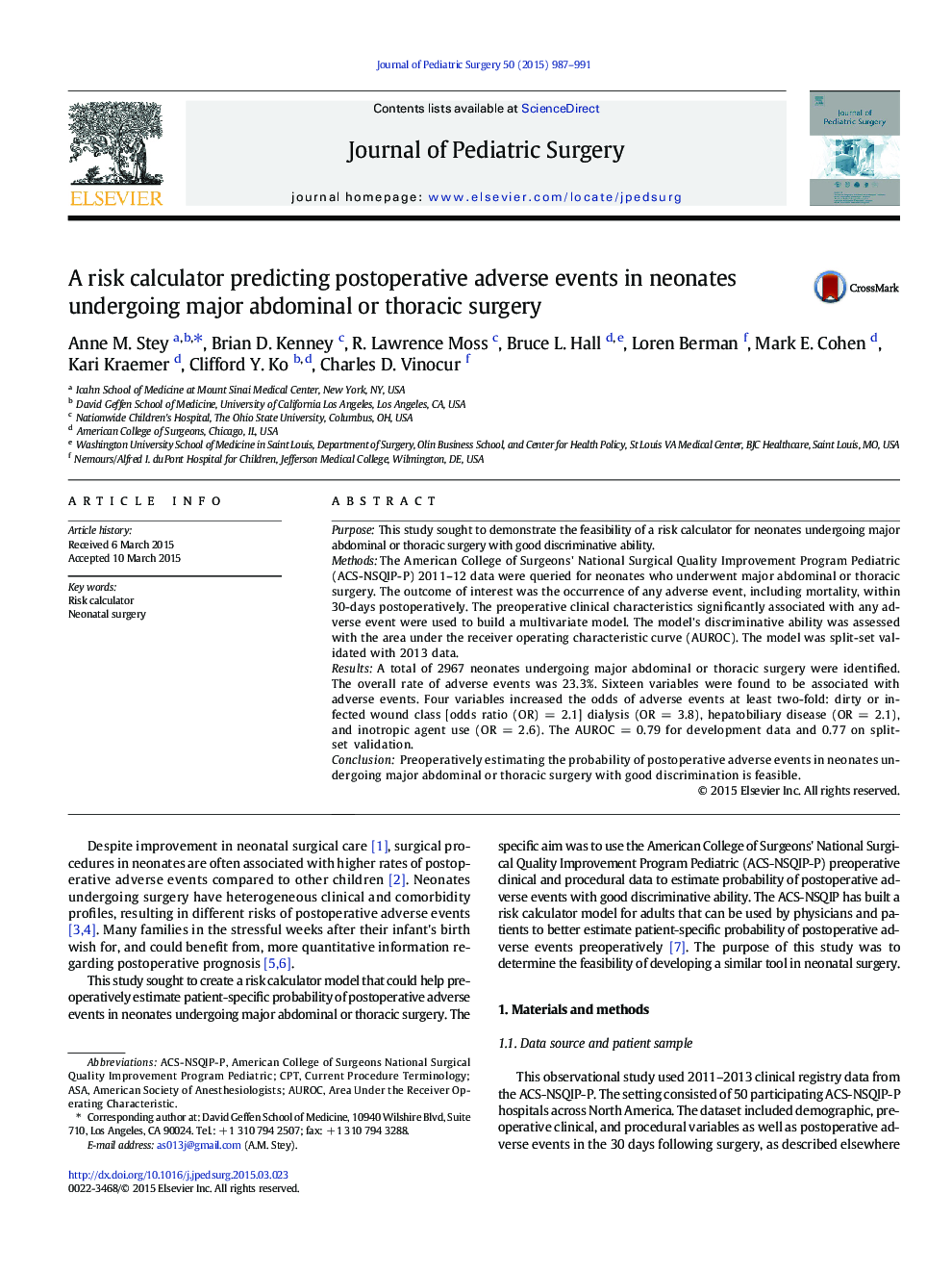| Article ID | Journal | Published Year | Pages | File Type |
|---|---|---|---|---|
| 4155051 | Journal of Pediatric Surgery | 2015 | 5 Pages |
PurposeThis study sought to demonstrate the feasibility of a risk calculator for neonates undergoing major abdominal or thoracic surgery with good discriminative ability.MethodsThe American College of Surgeons' National Surgical Quality Improvement Program Pediatric (ACS-NSQIP-P) 2011–12 data were queried for neonates who underwent major abdominal or thoracic surgery. The outcome of interest was the occurrence of any adverse event, including mortality, within 30-days postoperatively. The preoperative clinical characteristics significantly associated with any adverse event were used to build a multivariate model. The model's discriminative ability was assessed with the area under the receiver operating characteristic curve (AUROC). The model was split-set validated with 2013 data.ResultsA total of 2967 neonates undergoing major abdominal or thoracic surgery were identified. The overall rate of adverse events was 23.3%. Sixteen variables were found to be associated with adverse events. Four variables increased the odds of adverse events at least two-fold: dirty or infected wound class [odds ratio (OR) = 2.1] dialysis (OR = 3.8), hepatobiliary disease (OR = 2.1), and inotropic agent use (OR = 2.6). The AUROC = 0.79 for development data and 0.77 on split-set validation.ConclusionPreoperatively estimating the probability of postoperative adverse events in neonates undergoing major abdominal or thoracic surgery with good discrimination is feasible.
